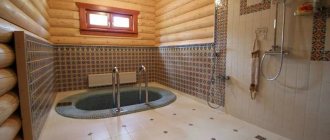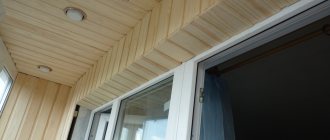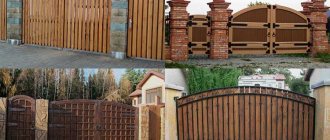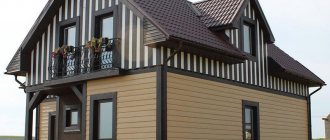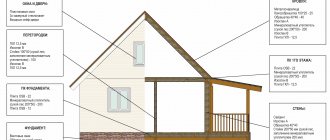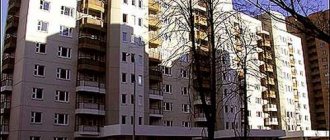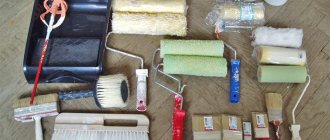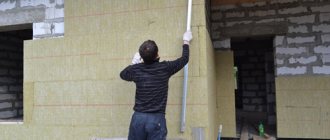Instructions for replacing the lower crowns of wooden houses
For every owner of a building built from natural, eco-friendly wood, sooner or later the question arises of repairing the most important structural elements of the building. Or more precisely, about replacing the lower crowns of wooden houses. This task, frankly speaking, is not easy, but if you have certain theoretical knowledge of the rules for such repairs and the necessary tools, you can replace the lower crown with your own hands, which will significantly save your finances. This article will discuss exactly how to replace a crown that has been damaged by time with your own hands.
Possible reasons for replacement
In most cases, repairs are required for one reason: the crowns gradually begin to rot, which makes living in the house uncomfortable and can provoke the collapse of the building. This occurs due to violations of construction technology.
If a house is built by qualified craftsmen, it will last at least half a century without requiring major repairs. If the builders used untreated timber, the wood will rot. The process begins precisely with the lower crowns, which are in contact with the humid environment more than other structural elements.
You can determine the replacement visually. To do this, you need to tap the log in randomly selected places. If the sound is dull, this is a sign of internal wood decay. A characteristic sign of destruction is mold covering the front surface of the log house. On average, the question of the need to change the crowns in a wooden house with your own hands arises 5–6 years after the completion of construction.
Article on the topic: Why the garage in tanks does not open online
Important! To ensure that the log house lasts as long as possible as a building material, it is recommended to use larch. In addition, wood is necessarily treated with deep penetration antiseptics.
Possible errors and difficulties
If mistakes are made during the process of replacing structural elements, the structure may collapse.
Safety precautions are also important and must be strictly observed at any construction site.
Frequent mistakes when carrying out restoration work are:
- work in rainy weather;
- use of low-quality materials;
- discrepancy between the sizes of old and new logs;
- lack of treatment of new elements with antiseptics;
- errors in caulking seams;
- use of faulty equipment.
Important! To avoid mistakes and possible consequences, it is recommended to consult with a specialist before starting work.
Crown processing products
Today on the construction market there is a fairly large number of different products for finishing wood and protecting it from negative factors. Experts recommend using the following means:
- drugs. All products have been tested and received certificates from Rospotrebnadzor and the Ministry of Health and Social Development of the Russian Federation. The fire-bioprotective agent of this brand provides comprehensive protection for wood. However, it cannot be used after coating with varnish, drying oil or any other water-repellent composition. The drug belongs to group 2 in terms of fire protection effectiveness according to NPB 251-98. The manufacturer guarantees protection for at least 20 years. The color of the wood does not change after processing. For the best effect, apply the product in 2-3 layers, after drying the previous one for 20-40 minutes.
- The products are produced in Australia. They also have certificates from the Australian Holzforschung Institute. A good option for protecting crowns is Belinka Base. The product penetrates deeply into the wood, protecting it from fungal diseases, beetles, and moisture. Features a high level of protection. It should be applied in two layers; after 12 hours, Tikkurila preparations are produced by the Finnish company. For external wood processing, it is worth using the Tikurilla “Vinha” and “Valti” product line. These products are specially created for unfavorable climatic conditions. The protective film is formed by the preparations “Color Extra” and “Color Satin”. And Aqua Color, Color, and Pohjuster primer penetrate deeply.
Repairing wall cladding
The interior decoration of a bathhouse is the first to fail, since it is mainly made of wood. Due to temperature changes and high humidity, it begins to rot and warp. It is necessary to tap the walls to determine the problem area. Replacing a deformed section of finishing will not be difficult.
It is much more difficult when you need to completely change the skin
| Actions | Subtleties |
| You must first bring the lining into the room. | It is necessary that it adapts to the temperature regime of the bath. |
| The surface of the walls must first be leveled so that the lining does not subsequently resemble “sea waves”. | This is achieved using lathing. Frame slats are installed perpendicular to the floor in increments of 0.7 m using a level, starting from the corner of the bathhouse. A thin string is pulled between them to align the horizontal slats. Separate bars are attached near windows and doors. The sheathing must be fastened with stainless or galvanized self-tapping screws that do not corrode. |
| The lining is installed on the ideal sheathing, starting from the corner, in a vertical direction (so that moisture drains easily without lingering on the panel). | Experts advise lining the steam room with deciduous wood; you can use coniferous wood to decorate the washing room and rest room. |
To prevent rotting and destruction, it is necessary to treat the wooden elements of the bathhouse with antiseptic impregnations. If you decide to tile the wooden walls of your bath rooms, then just follow the following recommendations.
- Lay the tiles on a flat and clean surface. To enhance the moisture resistance of the walls, they are first sheathed with roofing felt. To add strength, a metal mesh is sometimes attached to it. Then they plaster and apply a primer.
- To determine the angle for laying the first tile, you need to stand at the front door and choose the most noticeable one.
- The glue is applied directly to the tile, and not to the work surface (this will make it more convenient to attach the material). The glue quickly becomes unusable, so it does not need to be prepared in large quantities.
- To ensure that the gaps between the tiles are of the same thickness, special fasteners (dividing crosses) are used. They help to install beautiful tiles without various defects, which will increase the service life of the tiles.
Replacing the crowns of a house on a pile or columnar foundation
Replacing crowns in a wooden house on a pile foundation begins with the installation of jacks. The distance between the piles or posts should be sufficient for their installation.
To prevent the jacks from falling into the ground, a wooden shield 50 x 50 cm is placed under them. The wood of the top log of the dressing is protected by a metal plate from being crushed.
They raise the house from four corners. The lower logs of the wooden house are released. They can be removed. A support made of wood or bricks is installed. The jacks are lowered, and with them the upper logs of the crown. They can be replaced. The supports are removed. The log house is lowered.
Cost of work
The final cost of work is influenced by many factors, for example:
- scope of repairs;
- the need to raise the building;
- work area;
- the need to use special equipment;
- number of employees.
Approximate prices per linear meter are given in the table:
| Name of service | Price |
| Complex of works to lift the building | 1200 rub. |
| Dismantling a rotten log | 300 rub |
| Preparation + installation of a new log | 600 rub |
| Installation of inter-crown insulation | 100 rub |
| Waterproofing device | 100 rub |
| Replacing rounded logs | 2000 rub |
| Replacing logs from 200 mm (cutting into a bowl/foot) | 2300 rub. |
These prices are for labor only. Additionally, you will have to spend money on materials . However, it is not advisable to save on such repairs. Otherwise, the next repair will have to be done earlier than planned.
Methods for replacing logs
Scheme for replacing the crown of a frame house.
Since the times of ancient architects who built houses with a single ax, several methods have come down to our times of replacing rotted or insect-damaged crowns, and none of them involves completely dismantling the walls of the house.
In ancient times, when cement was replaced by clay, they tried to place the log house on a stone foundation. Wealthy peasants even made the ground floor out of stone. It was not easy to get a suitable stone for the construction of a full-fledged base, so not everyone could afford it, but for a foundation of several rows, material could be collected.
Since the lower crowns and frame were mainly replaced, the first method was as follows:
- At a distance of 0.5 m from the corner, the foundation was dismantled, and a stop for the flashing was inserted into the resulting opening. Such openings were made along one wall at intervals of 1 m. If the entire frame was to be replaced, then stops were installed along the entire perimeter of the frame. In the case of replacing the upper or lower log of the first crown, the foundation was dismantled only from the side of the wall in which the replacement was made.
- When stops were placed under all the walls, on one side the foundation was completely dismantled and the stops were removed. As a result, the house stood only on supports (they were also called churaks) on 3 sides. The lower log was lowered from the castle and its place was taken by a new, pre-prepared log. Thus, the lower beams of the frame were changed.
- The upper beams of the frame were replaced after both lower beams were removed and supports were again installed under those walls. After this, the stops were removed from the upper timbers of the frame and replaced with new ones.
Article on the topic: How to insulate walls and floors in a wooden house
The diameter of the logs making up the frame was always several centimeters larger than the circumference of the “ordinary” ones. When it was not possible to accurately match the diameter of the new log with the dimensions of the replaced one, the entire flashing was updated.
Laying tiles on a prepared wooden floor
The general principle when laying tiles on any substrate is its needs. Taking into account the installation method, joining the elements together, the location, size of the plates and other factors, a detailed installation drawing is drawn up, thanks to which the amount of tiles and adhesive is calculated. This takes into account the fact that some of the materials will be cut off due to compliance with a certain pattern. In addition, a small amount of tiles should be left in reserve in case of repairs.
It is important to decide where the installation will begin. In large rooms, not cluttered with furniture, equipment and other things, it is better to lay tiles from the center, while the pattern looks advantageous
In small rooms, usually only a small space near the door is free. Therefore, the pattern is selected exactly there, and tile scraps can be installed in other places.
In addition, you need to decide which option to lay the material - with or without seams. According to the second option, soft tiles are laid, since ceramic tiles arranged in this way can peel off when the house is deformed. In addition, you cannot bring the slabs closer to the walls than half a centimeter. It is better to fill this gap with sealant.
To lay tiles on a wooden base you need:
- special glue;
- drill with attachment - for mixing liquid mixtures;
- notched spatula;
- level;
- rubber hammer.
When laying, the mixed adhesive is spread using a spatula under the first row of tiles in an even layer. Each tile is laid with pressure and compacted with a hammer. Plastic crosses are placed at the intersections of the four tiles to ensure uniform seams. Each row is measured by level.
Basic methods of replacing crowns
The advantages of houses made of logs and timber are that they have a prefabricated structure. No binder mortar or fasteners are used during the construction process. Tight joining of the crowns is ensured by gaskets and the force of gravity. Therefore, damage to some elements of the building is not a death sentence, but a problem that has several solutions.
The choice is made based on the following criteria:
- foundation type;
- climatic conditions;
- the degree and size of damage to the walls;
- terrain;
- the presence of a stone oven on a common base.
After assessing the situation, a method for eliminating defects is determined.
Without raising the house
Involves partial replacement of damaged wall elements. This approach avoids the dismantling of structures, the use of special equipment and the application of great physical effort. You can change not only the bottom log, but also damaged areas at all levels. The method is applicable if the corners remain intact. However, even quality work does not guarantee that the supporting structures will not weaken. There is always a risk of further development of infection of the remaining elements. As a rule, detailed repairs are a temporary measure, since they do not eliminate, but only delay, a critical situation.
Over the centuries-old history of operation of wooden houses, several options for carrying out spot repairs have been developed.
The first is to excavate the defective area and install a “patch” made of timber, logs or bricks in its place. It is used for local damage on one or several tiers.
The advantage of this solution is that you can carry out repairs even alone without the involvement of specialists or the use of expensive equipment. The simplicity of the process also determines the time costs, which can be limited to one working day.
Article on the topic: Why in the south of Russia they built mud huts and not wooden houses
There are also disadvantages. Breaks in the links lead to weakening of the external walls, and the appearance of new joints increases the heat loss of the building.
The second method is to gain access to the defective area through the dismantled foundation. The limitation is cases when the building stands on a block or monolithic reinforced concrete foundation. After removing the top layer of the foundation, the crowns are replaced.
The advantage of the solution is its affordable cost and ease of implementation. The downside is labor intensity and a decrease in the strength characteristics of the foundation.
The third option is the most difficult, time-consuming and expensive. Represents a complete dismantling of the log house down to the very foundation. It makes it possible to replace bad timber, update waterproofing and gaskets with more modern and effective materials.
The advantage of dismantling a log house is a guaranteed high-quality result in all areas. The downside is the high cost of time and money, the need to evict the building and find places for temporary storage of household property.
With the raising of the house
This technology is most common in the private sector, despite its complexity and even danger. The reasons for this are simple - citizens ignore the rules for maintaining the log house and put off its repair until the last moment. As a result, several logs have to be replaced at once in order to save the house. The idea is to place support beams under the walls, raise the building above the base and carry out restoration of the masonry.
The advantages of the approach are the optimal combination of price and quality of work, the possibility of updating worn-out seals.
The disadvantage is the complexity of the process, the need for constant concentration and attentiveness. In addition, such an event cannot be called quick. Even with proper organization, stage-by-stage work will take at least five days.
"Spot" repairs
This technology is applicable if the wood is damaged only in one or several small areas of the lower zone.
Option #1. In this case, the rotten places are cut out and new “parts” are installed in their place.
Option #2. Instead of wooden parts, the resulting opening is filled with brickwork.
Pros: ease of repair. No practical skills, special devices, involvement of professionals or significant financial investments are required.
Disadvantages - new joints are formed, which leads to increased heat loss. In addition, the strength of the entire structure is reduced.
Scheme for replacing a section of log
First, the affected area of the wood is determined. It is visually difficult to understand how widespread the rot has become. To accurately determine the damage, use either a chisel, which is used to punch a log from the side of the visible area of the damage, or a feather drill for wood, which is used to drill holes using an electric drill.
Article on the topic: What to look for when buying a wooden house
The condition of the wood is determined by the condition and color of the chips. Having decided on the area to be replaced, they retreat 200 mm to the sides from its boundaries, and using a chain saw or electric saw, a section of the lower crown is cut out. After this, waterproofing is laid on the foundation in two layers.
Replacing a crown part. 1. Damaged area. 2. A cut area with a margin of at least 10 cm from the identified damage. 3. Liner
In the unaffected areas of the lower crown, notches are cut out with a saw for more reliable fixation of the insert element. The lower part of the second crown is treated with an antiseptic. An insert is cut from a log of the appropriate diameter; its length should be 10–20 mm shorter than the cut section.
The length of the notch should correspond to that on the undamaged areas of the lower crown. After this, the insert is installed (hammered with a sledgehammer) into the opening and the existing cracks are caulked with moss or other available material.
Thus, it is possible to gradually replace the entire perimeter of the rotted crown. Replacement begins from the corners from the bottom log of the frame.
As an option, it is possible to replace the damaged area not with wooden inserts, but with brickwork.
ve-nets (pre-reform) Noun, inanimate, masculine, 2nd declension (declension type 5*b according to the classification of A. A. Zaliznyak).
Root: -ven-; suffix: -ets [Tikhonov, 1996].
Pronunciation
- MFA: units h. [vʲɪˈnʲet͡s] pl. h. [vʲɪnˈt͡sɨ]
Meaning
The general prototypical meaning is the highest, uppermost part and decoration of something.
- outdated the same as the wreath ◆ It is not surprising that then the tree of the cross, the crown of thorns and the nails of Christ’s suffering in Greece were genuine or made for remembrance, but in the Roman church they multiplied so much that there can be 10 times more of them than there were real ones, and they show everyone to be truthful. )
- poet. the same as the crown ◆ And the metropolitan anointed King Joash and the crown, making the sign of the cross, and placed a crown on his head. ◆ From Latin, instead of crown, decision, governor, projectile, fortress, reserve we call crown, resolution, general, artillery, fortification, provisions, ammunition, etc.)
- halo, halo, luminous surrounding of something ◆ The crown of the moon with a foggy circle, // Crowned the cold face of winter. Vladimir Lapchevsky, “You are all loved by me”
- trans. arrangement in a circle, around something ◆ A ring of coral land encloses a greenish-azure lagoon surrounded by palm trees and white coral sand.
- architect a link of four fastened logs forming one tier of a wooden frame ◆ The wall will be more reliable if the first crown is assembled from oak or larch.
- trans. successful completion of any business or process ◆ The end is the crown of the matter.
- trans. the highest achievement ◆ Man is the crown of nature’s creation. ◆ This case was the crowning achievement of his career as an investigator.
- tech. gear transmission element ◆ A concrete mixer drum design is proposed that eliminates the possibility of cement mortar sticking to the walls and causing their corrosion. The drum consists of a steel ring with a gear rim. “Abstract Journal/Institute of Scientific Information (USSR Academy of Sciences)”, 1961
Article on the topic: How to dismantle an old brick house
Synonyms
- wreath
- —
- —
- framing
- tier
- —
- apogee, zenith, top
Related words
Etymology
Comes from the ancestors. *?, from cat. among other things happened: st.-slav. . Data used.
- crown of celibacy
- go to the crown
Translation
Homophones
Forms homophones with the noun wine.
Noun, animate, masculine, 2nd declension (declension type 5*a according to the classification of A. A. Zaliznyak).
Root: -ven-; suffix: -ets.
Metagrams
| Unit | crown |
| Unit about. | crown |
| Unit sub. | Venets |
| Mn. | Venzi |
| Mn. owls | Venzite |
| Number | crown |
| Sound | — |
crown
Noun, masculine, declension 8.
- —
- .
- A
- B
- IN
- G
- D
- E
- AND
- Z
- AND
- Y
- TO
- L
- M
- N
- ABOUT
- P
- R
- WITH
- T
- U
- F
- X
- C
- H
- Sh
- SCH
- Kommersant
- Y
- E
- YU
- I
ring, rim, hoop, circle, stripe in a circle, with the meaning of an exalted position or honorable value of a thing. | The outline of radiance and shine around the head of a saint on icons; | royal headdress, crown; | girl's headband, headband; | headdress in the form of the lower cut of a sugar head.
, with a hem, a cassock or a pearl net on the forehead; | placed during a marriage, wedding, on the head of the groom and the bride, a marriage sign, in the form of a crown; | *the very wedding, wedding.| Couple, husband and wife, tax. For us, bread comes from the crown according to the measure. |Wreath, wickerwork with a ring of branches, greenery, flowers. | Decoration with a wreath around a pillar, vessels, etc.
| A row of logs in a log house, a connection of four logs in a log house, a tier of logs. In the hut of the cross there is always an odd number of crowns, from 19 to 21. | Tax, family, yard, smoke, household; | couple, husband and wife, Vlad. lower (is this the cause of the bindweed?). | Mountain range in a circle, semicircle; steppe ridge, ridge, east. | ledge of a flat hill surrounding lowlands, sections of rivers, rivers, urema.
The crown of a horse is the place where the hoof meets the skin. If a horse catches a horseshoe crown, then the hoof will forever grow ugly. | *Honour, glory, honor, decoration, honorable completion of a task; reward, glorious retribution. Crown of Summer, church. circle, all year round. The end of the matter is the crown. A husband is a father to his wife, a wife is a crown to her husband.
Crown accept, embrace; receive the martyr's crown, gain the glory of a martyr. Kamenets crown: there is water all around, and trouble in the middle; R. Smotrich flows around the rocks on which K-Podolsky. A good end to the whole thing is the crown. To the face, on the backside with a club, here you are under the crown! To cover up a sin with a crown. I was crowned, and that was the end of it.
| A satin or paper ribbon with the image of the Savior, the Mother of God and John the Evangelist, placed on the forehead of the deceased during burial. | The upper part of the flower, the petal hoop, the bell of the petals. | Sib. game of corollas, rodfants. Corolla of the tooth, its upper part: middle, pastern; underside, root.
Article on the topic: How to build a house with an underground garage
Crowned, related to the crown, | or crown-shaped, crown-shaped, having the appearance, image, likeness of a crown, or composed of crowns. Crown drill, forge, equipped with four pointed crowns. Crown support, mine, covered with a log house, log crowns. Coronet, related to the crown, in various ways. meaning Crown tax, old. getting ready with the newlyweds. Coronal memory, old.
order of the dean on the wedding;| marriage certificate. Corolla, Anthericum plant. Crowned, crowned m. bestowing a crown, possession, glory, strength and power, etc. Crowned, crowned person, sovereign and empress. Crown bearer m. crown bearer w. the same as well | saint, worthy of the crown of spiritual glory. Crowning cf. valid and the state of the crown bearer.
To crown someone, to crown someone, to place an honorable crown on someone; | to elevate to the kingdom, to crown; | to honor, to honor, to bestow on someone the highest honorary award. Tas is crowned with a laurel wreath. To crown the matter, to finish it safely, to complete it in a desirable manner, to complete it. To crown, to marry. to marry, to perform the sacrament of marriage over someone. They got married in such a way that even at home they didn’t know about the stolen wedding.
Where they get married, this is where they bury (take a funeral). Today he got married, and tomorrow he died. A thin priest will marry you, but a good priest will not debunk you. To get married around a spruce tree, around a bush, talk. comic about an unmarried couple (is it a simple joke, or a memory of paganism?). He died, so there is no wedding, but a funeral service. Three times married, but only one wife? pop. -xia, return. and suffer. To crown, to crown, to crown. Wedding Wed.
valid and status by value. verb nat and sya. Wedding, same thing. Wedding or wedding, related to the wedding, belonging to the wedding ceremony, wedding. A wedding towel sent by the bride to the groom, through matchmakers or through his father. Wedding candles are blown out at once in order to live together and die together. |Wedding noun. wedding, wedding, wedding fee. Crowned m.-nitsa f. crowning, crowning.
In Ozhegov's dictionary
CROWN, -ntsa, m. 1. Same as wreath (obsolete). Ternovy v. (translated: martyrdom, suffering; high). 2. transfer, what. Successful completion of something. as a reward for work, efforts (high). B. efforts, achievements. The end is the matter. (last). 3. Precious headdress, crown. Tsarsky V. 4.
Article on the topic: How to make a drain in a bathhouse with wooden floors
We suggest you read: Beetroot juice: benefits and harms: how to drink correctly
In a church wedding ceremony: a head decoration in the form of a crown, which the groomsmen hold over the heads of those entering into marriage. Go under the. with someone (get married). After the crown (after the wedding). 5. Halo, a light rim around a celestial body. 6. Halo, halo (2 meanings). 7. In a wooden frame: a link of four logs in a connection (in 7 values). || decrease corolla, -a, m.
(to 6 digits). || adj. coronal, -aya, -oe (to 1, 3,4, 5, 6 and 7 values).
In Ephraim's dictionary
- outdated Wreath.
- A precious headdress in the form of a wreath or crown, worn as a symbol of the power of the monarch during the ceremony of enthronement.
trans. Royal power, throne.
- A crown placed on the bride and groom during a church wedding ceremony.
- trans. Wedding, marriage.
- The top of the mountains, the top of the building.
- trans. The highest limit, the pinnacle of something.
- Women's hairstyle in the form of braids laid around the head.
- Vintage girl's headdress, headband.
- A row of logs in a log house.
crown p. -ntsa, Ukrainian Vinets, blr. crown, Bulgarian crown, old glory vints στέφανος (Supr.), Serbo-Croatian Vijenac, Czech Republic věnec, slvts. venec, Polish Wieniec.Related Lit. vainikas – derived from *vainas, Russian. vein "wreath", Polish. wian from vit; see Guyer, LF 55, 360; M. – E. 4, 439. The comparison of Yagich (AfslPh 16, 526) with lit. vainìkis; Wed wreath.
CROWN, crown, male 1. A headdress, a kind of metal wreath or crown, placed on someone as a sign of conferring a high rank on him or as a sign of an honorary award for merit (·book ·obsolete). Tsarsky Vet.| trans. Successful completion of some task, rewarding for waiting or labor incurred (book · outdated).
Article on the topic: How to properly make an electric heated floor in a bathhouse
The crown of effort. “The end of the whole thing is the crown.” pogov.2. The crown placed on those entering into marriage in the rite of a church wedding (church).| trans. The wedding itself, the wedding (colloquial). “After the wedding there was almost no meeting planned.” Dostoevsky. *****immediately after it). Under the crown (during the wedding ceremony).
3. The same as a wreath (poet. obsolete). "Bring fresh crowns." Pushkin. “And taking off the first crown, they put a crown of thorns entwined with laurel on it.” Lermontov.
4. Light rainbow ring around the star (
meteor.
).5. Bezel, radiance depicted on icons around the head of a saint (
).6. A circle formed by the peaks of a circular mountain range (
).7. A row of logs in a log house (
).8. The place where the hoof meets the skin in a horse (
).• Accept the crown of martyrdom (church-book) - die in torment for the faith.
Determination of the degree of destruction
Crowns with mold and dark spots that make a dull sound when tapped need to be replaced.
The choice of restoration method depends on how much the house is affected by rot or destroyed by insects. The picture should be as objective as possible, since a superficial approach will not give the desired results, but will only aggravate an already difficult situation.
Diagnostics of the structure is carried out using the following methods:
- Visual inspection. Evidence of wood loss of quality are dark spots, dents, and narrow passages made by insects. The defective areas are soft and slippery to the touch and produce a faint dull sound when tapped.
- Taking samples. This is done using a drill with a narrow crown or a feather drill. The condition and color of the core or shavings determine the extent, depth and area of damage to the log house.
Based on the data obtained, a decision is made on the choice of building restoration technology. In some cases, this is not easy, but it is better to make labor-intensive repairs than to build a new building while living in a dilapidated old one. It is impossible to return wood to its original state, and destructive processes will continue. The pathology also spreads to neighboring fragments of masonry, which can lead to the complete destruction of the structure.
